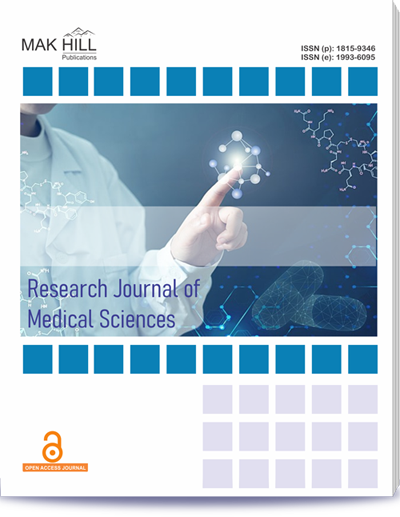
Research Journal of Medical Sciences
ISSN: Online 1993-6095ISSN: Print 1815-9346
109
Views
13
Downloads
Study of Factors Predicting the Outcome of Extracorporeal Shock Wave Lithotripsy in Patients of Renal and Upper Ureteric Calculi
Pushpendra Kumar Shukla, Kapil Dubey, Varsha Shukla, Vivek Sharma, Ashish Ghanghoria, Rachna Gupta and Padma Shukla
Page: 265-269 | Received 24 Dec 2023, Published online: 23 Jan 2024
Full Text Reference XML File PDF File
Abstract
Extracorporeal shock wave lithotripsy (ESWL) is a safe, effective, noninvasive, and commonly used method for uncomplicated upper urinary tract calculi. The stone‐free rate (SFR) is influenced by stone characteristics (stone size, location, density in Hounsfield Unit, degree of obstruction), renal anatomy (congenital anomaly, hydronephrosis, stenosis, calyceal diverticulum), patient‐associated factors (Body mass index, skin‐to stone distance, and renal function), and efficacy of lithotripter. The present study is conducted with the objective of determining the predictors affecting the outcome (success or failure) of ESWL in renal and upper ureteric calculi. This cross‐sectional hospitalbased study was conducted in the Department of General Surgery and Urology, Sanjay Gandhi Memorial Hospital, Rewa, India from July 2021 to June 2022, in which 95 patients with renal and upper ureteric calculi were included. All patients were treated with ESWL. We evaluated the role of stone (size, location and density) and patient (sex, age, body mass index and skin to stone distance) related attributions in predicting the clinical outcome of ESWL. After statistical analysis, p‐value < 0.05 was taken as the level of significance. A total of 95 cases were selected for the study. The majority of the patients (34.73%) were found in between 18 to 30 years age group, Males were slightly predominant 53 (55.78%) than females 42(44.21%). The most common site of the renal stone was pelvis (34.73%) followed by the lower calyx (18.94%) and most of the stones (83.78%) were <10 mm in size. Stone density <800 HU was found in 50.52% of patients. Stone‐free rate (SFR) was 75.78% after a maximum of 3 sessions of ESWL. Size (<10 mm), Site (Non‐inferior calyceal calculi) skin to stone distance (<10 cm), and stone density (< 800HU) were significant predictors of the success of ESWL (p<0.05). Stone size, stone location, stone density, and skin‐to‐stone distance are important predictors of the SFR of ESWL for both renal and upper ureteric stones. We should take these factors under consideration for proper case selection, optimal results, and patient counselling.
How to cite this article:
Pushpendra Kumar Shukla, Kapil Dubey, Varsha Shukla, Vivek Sharma, Ashish Ghanghoria, Rachna Gupta and Padma Shukla. Study of Factors Predicting the Outcome of Extracorporeal Shock Wave Lithotripsy in Patients of Renal and Upper Ureteric Calculi.
DOI: https://doi.org/10.36478/10.59218/makrjms.2024.3.265.269
URL: https://www.makhillpublications.co/view-article/1815-9346/10.59218/makrjms.2024.3.265.269